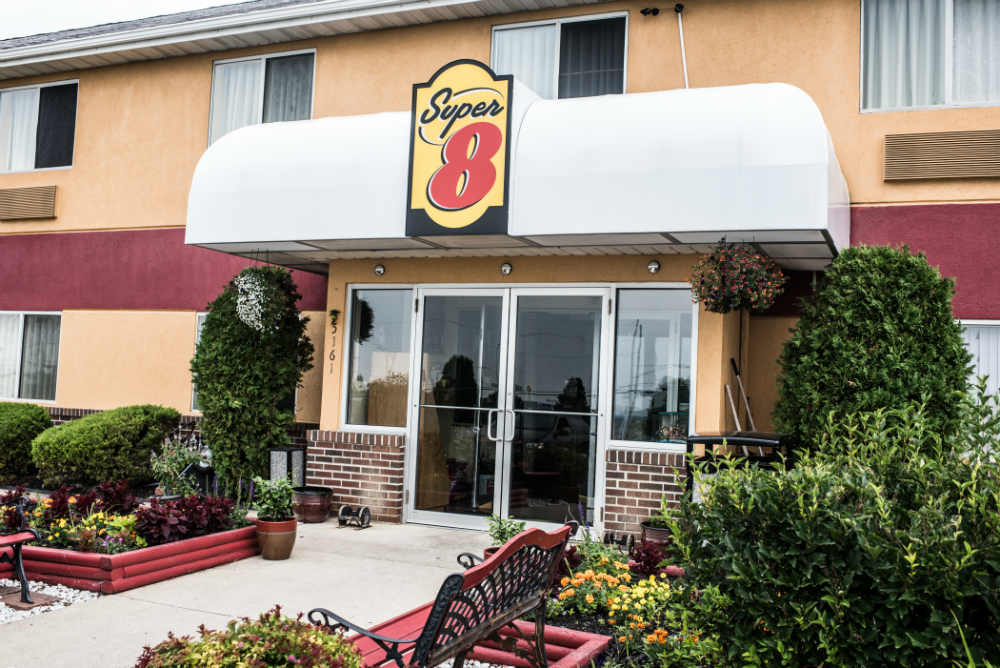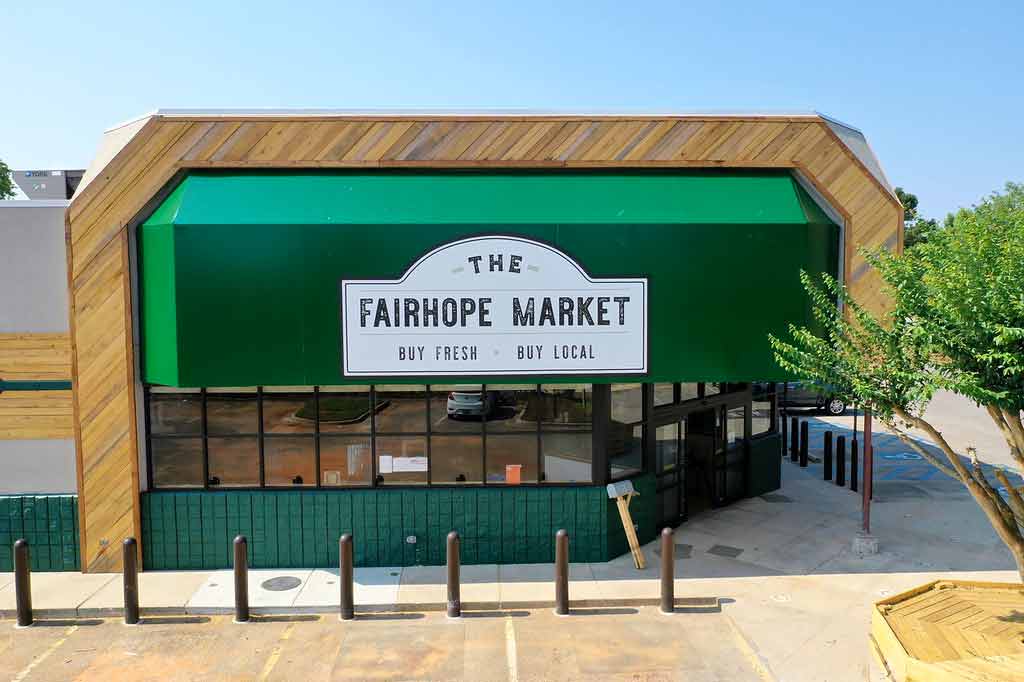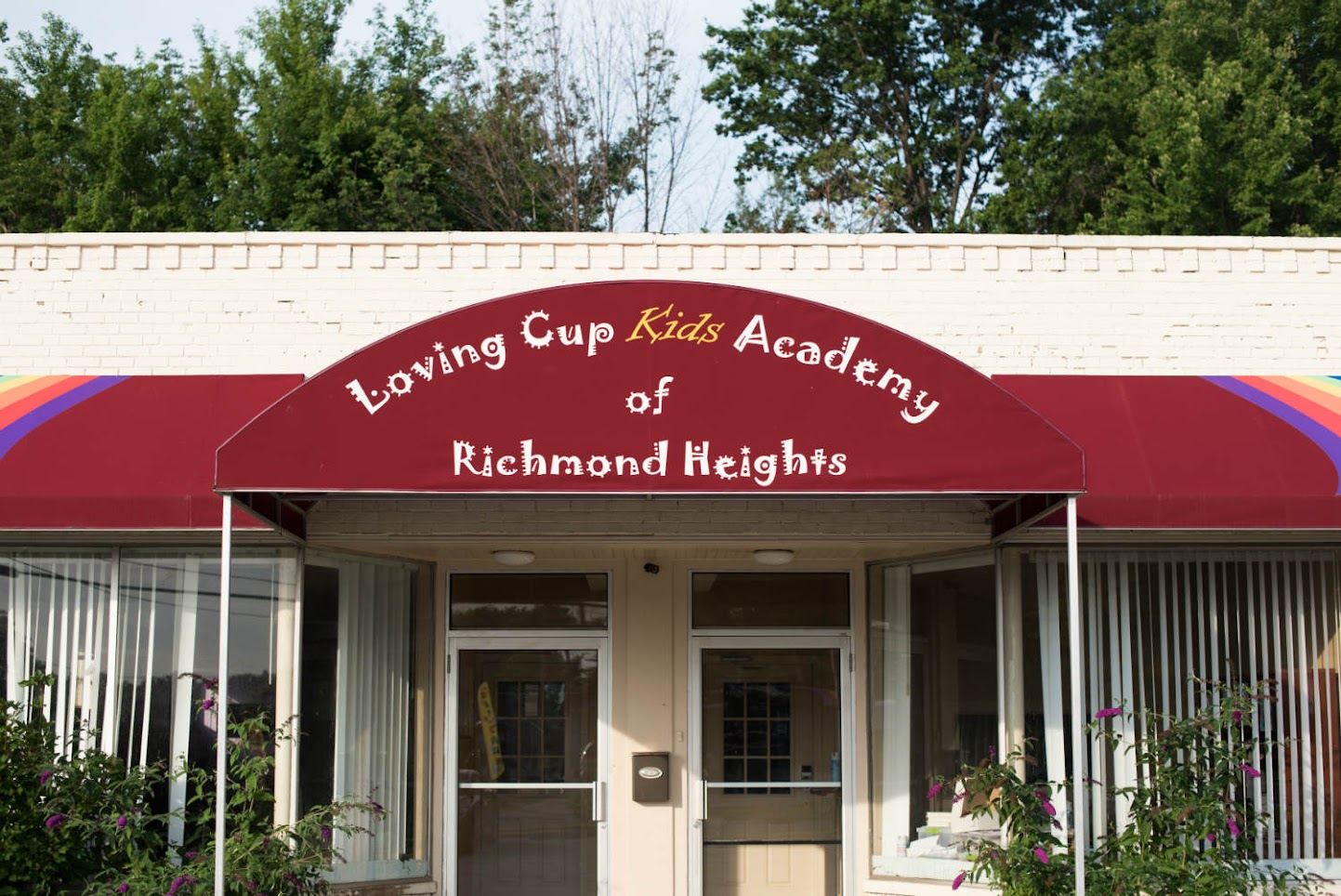
How Many Types of Commercial Awnings
Commercial awnings come in many styles and materials to suit diverse architectural contexts and business requirements. These encompass styles like dome, concave, convex, wing, and shed, offering entirely customized designs.
Materials like metal, canvas, vinyl, and polyester are also utilized based on specific needs. Each material has its own unique advantages, ranging from durability to aesthetics.
Moreover, retractable and fixed options provide businesses with flexibility and constant coverage. Explore further for a thorough understanding of each style and their ideal applications.
Understanding Outdoor Awnings
Exploring the world of outdoor awnings, it is essential to note that they encompass a variety of types, such as concave, convex, dome, wing, and shed awnings, each offering unique benefits tailored to diverse architectural contexts and business needs.
Commercial awnings are not merely functional, providing shelter and shade for outdoor seating; they also contribute substantially to businesses’ aesthetic appeal and branding. Available in various styles and materials, including commercial retractable and metal awnings, they can be customized to suit any business.
From awning installation to ongoing maintenance by Blinksigns, selecting the right type of commercial awning requires careful consideration. Custom awnings, tailored to specific requirements, offer a practical and visually appealing solution.

Commercial Awnings for hotel
Benefits of Metal Awnings
Building on the discussion of various types of commercial awnings, a closer look at the benefits of metal awnings reveals their significant advantages, especially regarding durability, aesthetics, and cost-effectiveness. Metal awnings are popular for commercial spaces due to their longevity and low maintenance requirements.
With styles such as standing seams and industrial canopies, these awnings blend practicality and aesthetic appeal. This makes them a cost-effective option for businesses seeking a balance between style and function.
The durability of metal awnings guarantees long-lasting weather protection, making them a sound investment for businesses. Their robust construction can withstand varying climatic conditions, reinforcing their reputation for reliability and endurance.
Canvas Awnings: A Close Look
Exploring the domain of canvas awnings, we find that their popularity in commercial spaces can be attributed to their durability, weather resistance, and customizable nature. These attributes make them a highly sought-after choice for retail storefronts, restaurants, and office buildings.
Canvas awnings are not only tough and able to withstand various weather conditions, but they also provide efficient shade and protection to these commercial establishments. In addition, their customizable nature allows for tailored designs to match the aesthetics of the business, making them a versatile option.
From logos to specific colour schemes, these customized designs can significantly enhance the overall branding of commercial spaces. As a result, canvas awnings represent a cost-effective, practical, and aesthetically pleasing solution for shading and branding purposes in commercial environments.
Exploring Vinyl Awnings
Paving the way for durable and weather-resistant commercial shading solutions, vinyl awnings offer a valuable blend of low maintenance, long-lasting performance, and aesthetic versatility. Favoured in commercial spaces for their durability, these awnings have the added advantage of weather resistance, providing reliable sun and rain protection.
This makes them ideal for creating comfortable outdoor areas for customers, regardless of the weather. Another significant benefit of vinyl awnings is their low maintenance. They are easy to clean and resistant to fading. They maintain their appearance over time, ensuring a cost-effective solution.
With a wide range of colors and styles, they allow for high customization, enabling businesses to align the awnings with their branding requirements.
Polyester Awnings: Pros and Cons
While vinyl awnings offer numerous benefits, another viable option for businesses to contemplate is polyester awnings, which present their advantages and disadvantages. Due to their lightweight nature, polyester awnings are commonly utilized in commercial applications.
They offer excellent UV resistance, consequently protecting against the sun and preventing colors from fading. Additionally, their durability makes them a cost-effective choice. Customization is another advantage, with many colors and designs available to match any business’s brand.
Nevertheless, they do require regular maintenance as they can become susceptible to mildew in humid environments. Overall, polyester awnings are a robust, customizable, and aesthetically pleasing solution for businesses.
Fiberglass Awnings and Their Advantages
Fibreglass awnings, renowned for their lightweight yet durable nature, offer many advantages in commercial settings. Their durability is unmatched, and they are resistant to corrosion, rot, and insects, ensuring their longevity. This makes them a cost-effective solution for businesses looking for long-term use.
Additionally, fibreglass awnings provide excellent weather protection, effectively shielding commercial spaces from sun, rain, and other elements. Apart from their practical benefits, these awnings also contribute to the aesthetic appeal of establishments.
They offer a sleek and modern look that can enhance the overall design of any commercial space. Fibreglass awnings can be customized in various colors and styles to match a business’s architectural design and branding needs.
Wood Awnings: Aesthetic and Durable
Wood awnings, recognized for their aesthetic appeal and durability, are valuable to commercial spaces. These awnings offer a natural, warm look that enhances the facade of any building. More than just being visually appealing, wood awnings are renowned for their longevity, which is exceptional when appropriately maintained.
- A wooden awning kit enables easy assembly and installation, simplifying the process of building wood awnings.
- Specifically, designed wood awnings for doors provide a welcoming, sheltered entrance to a commercial space.
- Due to their versatility, wood awnings can be customized to match various architectural styles, ensuring a cohesive look.
Furthermore, wood awnings in commercial settings are eco-friendly, contributing to sustainable building practices. Overall, wood awnings’ aesthetics and durability make them popular for commercial spaces.
Evaluating Acrylic Awnings
Moving from the natural appeal of wood awnings, the acrylic awning is another type of commercial awning that stands out due to its robustness and weather resistance.
Acrylic awnings are popular in commercial settings due to their durability. They are lightweight, providing flexibility for various architectural applications.
One key feature is their UV protection, which maintains their color, enhancing aesthetic appeal while providing practical functionality. Acrylic awnings come in various styles and colors, making them a versatile choice for businesses.
| Feature | Benefit |
| Durability | Long-lasting, cost-effective |
| Weather and UV Resistance | Maintains color and shape |
| Variety of Colors and Styles | Versatility in design |
| Lightweight | Suitable for various architectural applications |
| UV Protection | Prevents color fading, offers sun protection |
Maintenance of Different Awning Materials

Commercial Awning for Local store
Proper upkeep of commercial awnings, irrespective of their material, plays an instrumental role in preserving their functionality and aesthetic appeal over time.
The maintenance of these outdoor awnings varies based on their material and type, including fabric awnings, metal awnings, canopy awnings, louvred roof systems, and outdoor seating awnings.
- Fabric Awnings: Require regular cleaning with mild soap and water and periodic inspection for tears or damage.
- Metal Awnings: Necessitate occasional inspections for rust and corrosion. Repainting may be needed to keep their appearance intact.
- Louvred Roof Systems and Canopy Awnings: Inspection for debris in louvres, ensuring smooth operation of adjustable panels, and checking for tears or loose fittings are essential.
Key Factors to Consider When Choosing Materials

Commercial awnings for school
Understanding the maintenance needs of various commercial awnings and careful evaluation of the critical factors while selecting materials becomes essential.
The chosen materials should provide durability and weather resistance for long-lasting performance, especially in exterior applications.
They should also present a modern design aesthetic, enhancing the visual appeal of the commercial space while providing shade and weather protection.
The following table summarises the key considerations:
| Factor | Importance | Examples |
| Durability | Ensures longevity and returns on investment | GHRC 200 Series |
| Weather Resistance | Withstands different weather conditions | GHRC 100 Series |
| Aesthetic Appeal | Enhances the visual appeal of the space | Modern design materials |
Frequently Asked Questions
What Is a Commercial Awning?
A commercial awning is an architectural feature businesses use for aesthetic enhancement and practical benefits. It provides shade and protection from weather and contributes to a business’s visual identity through customizable options and styles.
What Is a Permanent Awning Called?
A permanent awning, often used in commercial settings for lasting shade and protection, is typically called a stationary awning. This fixture enhances architectural aesthetics while offering a long-term shading solution for businesses.
What Type of Awning Is Best?
The best type of awning depends on the business’s specific needs and goals. Location, sun protection, and architectural style influence this choice. Collaborating with awning experts can guarantee the best selection and results.
What Is the Difference Between an Awning and a Canopy?
Awnings and canopies are distinct types of commercial shade solutions. Awnings are typically attached to a building’s exterior, providing shelter over windows and doors, while canopies are freestanding and offer overhead protection in open areas.
Conclusion
To sum up, the selection of commercial awnings encompasses various materials, each with distinctive characteristics and benefits. Whether metal, canvas, vinyl, polyester, wood, or acrylic, the choice depends on specific business needs and aesthetics.
From weather protection to enhancing exterior appeal, Blinksigns commercial awnings serve multiple purposes. Understanding these different types, their maintenance requirements, and critical considerations while selecting them can aid businesses in making an informed decision that aligns with their specific goals.